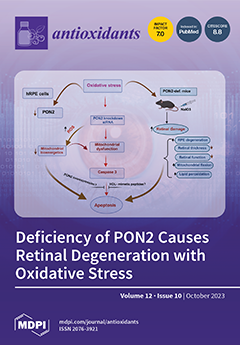Nymphoides peltata has been widely used pharmacologically in traditional Chinese medicine to treat heat strangury and polyuria. The aim of this study was to isolate the bioactive components from
N. peltata and evaluate their potential use as antioxidant and anti-wrinkle agents. Phytochemical investigation of the methanolic extract of
N. peltata roots led to the isolation of 15 compounds (
1–
15), which were structurally determined as α-spinasterol (
1), 3-
O-
β-D-glucopyranosyl-oleanolic acid 28-
O-
β-D-glucuronopyranoside (
2), 4-hydroxybenzoic acid (
3), protocatechuic acid (
4), vanillic acid (
5),
p-coumaric acid (
6), caffeic acid (
7), ferulic acid (
8), neochlorogenic acid (neo-CQA) (
9), chlorogenic acid (CQA) (
10), cryptochlorogenic acid (crypto-CQA) (
11), isochlorogenic acid B (3,4-DCQA) (
12), isochlorogenic acid A (3,5-DCQA) (
13), isochlorogenic acid C (4,5-DCQA) (
14), and 3,4,5-tri-
O-caffeoylquinic acid (TCQA) (
15). Of these 15 compounds, compound
2 was a new oleanane saponin, the chemical structure of which was characterized by 1D and 2D nuclear magnetic resonance (NMR) spectroscopic data and high-resolution electrospray ionization mass spectrometry (HRESIMS), as well as chemical reaction. Biological evaluation of the isolated compounds revealed that 3,4,5-tri-
O-caffeoylquinic acid (TCQA) significantly improved Nrf2 levels in an Nrf2–ARE reporter HaCaT cell screening assay. TCQA was found to potently inhibit the Nrf2/HO-1 pathway and to possess strong anti-wrinkle activity by modulating the MAPK/NF-κB/AP-1 signaling pathway and thus inhibiting MMP-1 synthesis in HaCaT cells exposed to UVB. Our results suggest that TCQA isolated from
N. peltata might be useful for developing effective antioxidant and anti-wrinkle agents.
Full article






